Carrot harvest helped detectorist find hoard of ancient coins
- Published
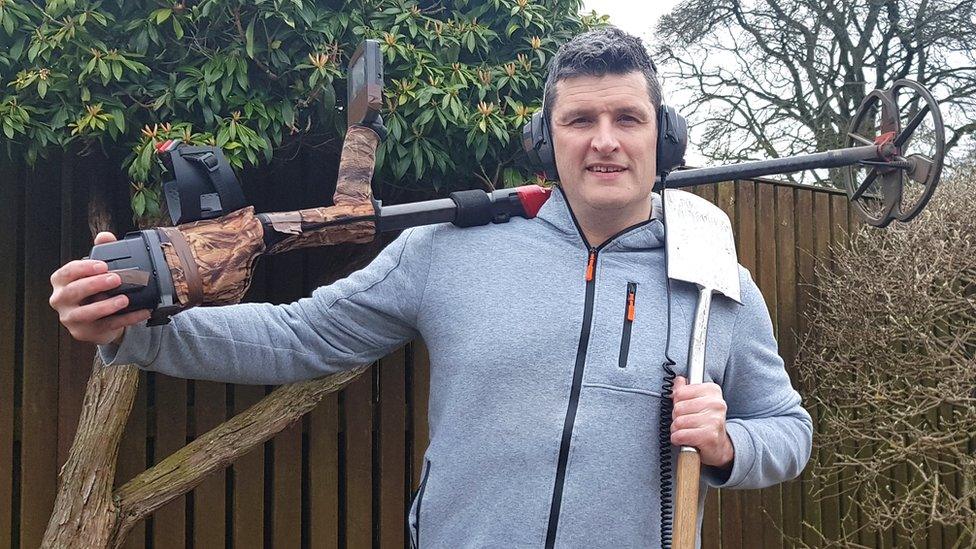
Alan Baxter has discovered more than 500 pieces ranging from the Bronze Age to the medieval period
When Alan Baxter found a medieval ring in a farmer's field he knew there could be more ancient artefacts nearby - but the stubble from the thick oat crop made it difficult for his metal detector to get anywhere near the ground. So he waited.
Four years later the farmer had planted and harvested carrots.
"It must have had a deep plough when the carrots got lifted and I could get my detector right to the soil," the 44-year-old told BBC Scotland News.
"Every 3ft I was getting a signal. I couldn't move, there was stuff everywhere.
"I didn't want to go home."
The highlight of his haul in 2022 was a hoard of farthings from the reign of 15th Century Scottish King James III.
"I got my first one and I knew it was really rare because I know my coins," he said.
"After that it was just like a tap, it just kept on going, and over the course of a few weeks I pulled 52 of them."
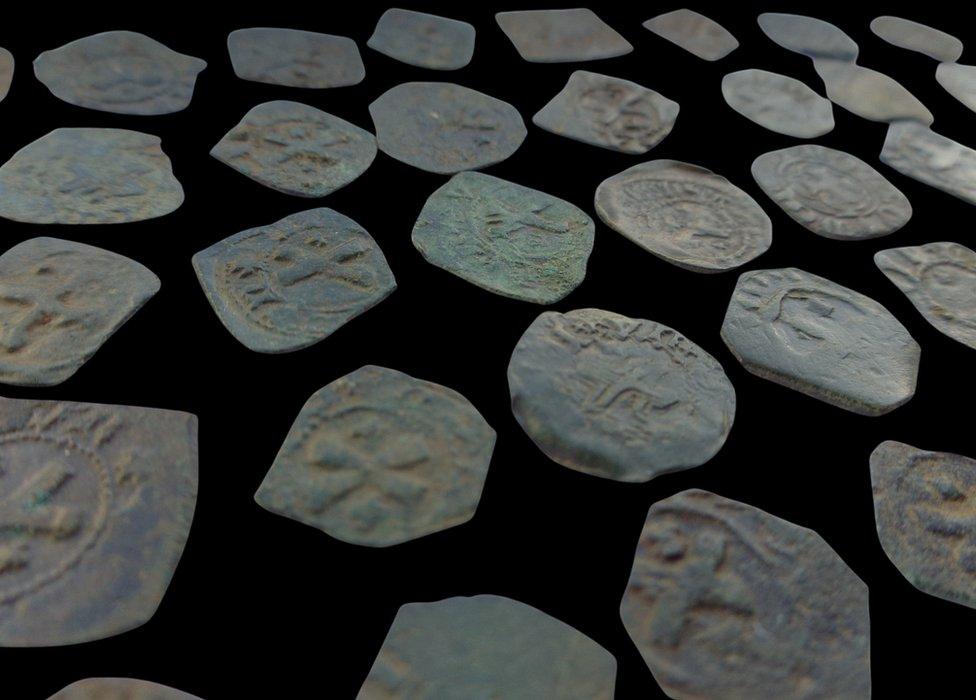
A hoard of farthings from the time of James III, who reigned as Scotland's king from 1460 to 1488
The 500-year-old coins, which were made of copper and were worth a quarter of a penny, were in very good condition, Mr Baxter, from Falkirk, said.
The coins are irregular shapes. They have the Saltire - the cross of St Andrew - on one side and a crown on the other.
"To hold something that's hundreds of years old for the first time is extraordinary," he said.
"You get a real buzz going up and down your body which lasts all day and all night."
An expert at the National Museum of Scotland said it was the first hoard of James III farthings to be found since 1919.

Mr Baxter says it is difficult to work on stubble fields
Metal detectorists need to ask for permission from landowners to search on their land and anything they find must be handed into the Treasure Trove for analysis and recording.
Under Scottish law all finds of archaeological, historical or cultural significance must be reported and can be claimed by the Crown.
Neither detectorists nor landowners have ownership rights to any archaeological finds made in Scotland.
Finds that are allocated to a museum through the Treasure Trove system are usually acknowledged by an award paid to the detectorist.
Detectorists generally split the money with the landowner.
Mr Baxter has detected at many sites, all of which he keeps a closely guarded secret. They include the 14-acre fields in Fife where he has now found more than 500 pieces ranging from the Bronze Age to the medieval period.
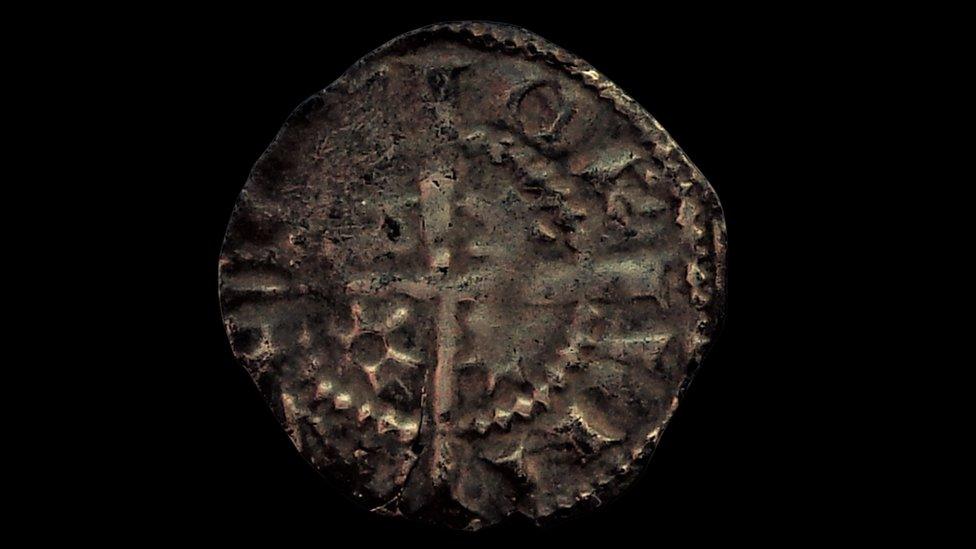
A first issue farthing of John Balliol, who reigned from 1292-1296
"I go along to farmers' doors with my portfolio of previous finds and show them what I do and ask them for permission to detect on their land," he said.
"You try to make yourself presentable, you put gel in your hair and wash your car and turn up in nice clothes.
"I hate getting permission because it's quite awkward speaking to the landowner. Farmers are busy and the last thing they want to do is speak to a wee guy asking for metal detecting permission."
The James III hoard has been put into the British numismatics journal, which charts the best finds in the country.
It also includes two Balliol coins which Mr Baxter discovered at the site in Fife. These farthings are extremely rare and are the only two to have ever been found in Scotland.
John Balliol reigned as king of Scotland from 1292 to 1296.

Medieval coins from the time that Edward I ruled England between 1272 and 1307
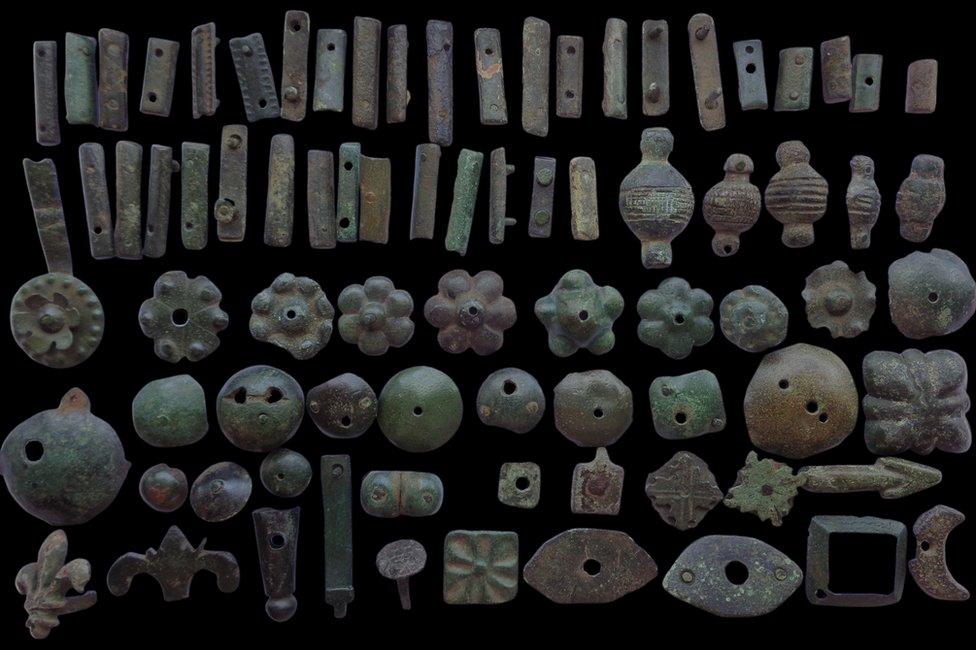
Medieval belt mounts dating between 12th to 14th Century from the Fife assemblage
The find was allocated to the National Museums of Scotland and £5,000 was paid out.
Mr Baxter has also found 69 medieval coins from the reign of English King Edward I, whose armies invaded Scotland at the end of the 13th Century.
The medieval ring, which was his first find on the Fife site, dates between the 13th and 14th century.
"Initially I thought it was a bottle top because when it came out of the ground I could see the silver edges," Mr Baxter said.
"I saw the writing at the side and the big clasped hands at the front and I thought: 'That's a medieval ring'.
"It was just a great feeling to see it because it was a sunny day and it was twinkling away and it was in really good condition because it's been coated in gold, which has protected it from the soil."
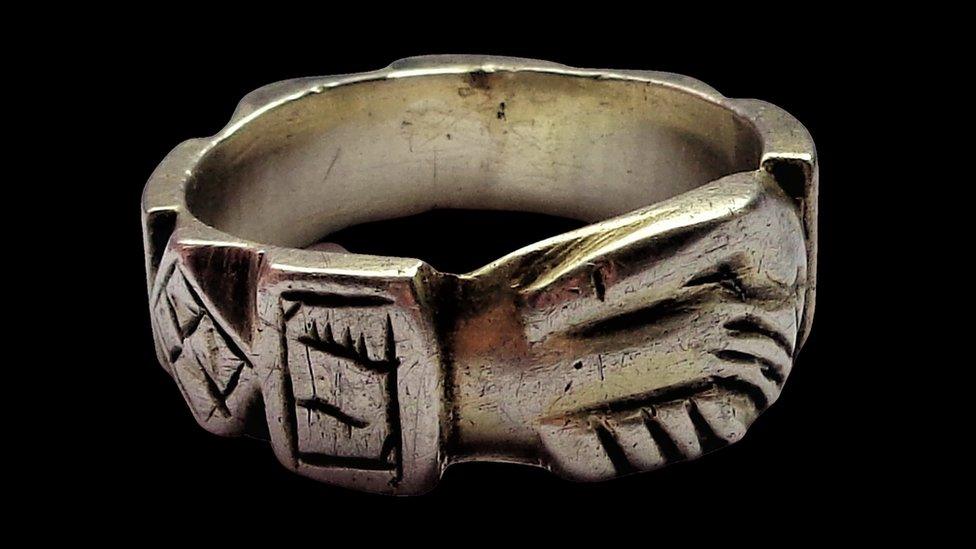
The silver medieval ring, which is coated in gold, dates between the 13th and 14th Century
Mr Baxter, who works as a lab technician, said he believed it was a betrothal ring.
"It would have been a higher status individual who owned it," he said.
"It weighs 9.5g, it's a heavy piece. A medieval penny would weigh about 1.2g, so that's about seven medieval pennies, so it wouldn't have been a peasant who owned that at the time."
The ring is silver but it has been coated in gold. It was eight inches down in the ground when his detector picked it up.
Mr Baxter, who has written a book entitled Making history: My Life As a Scottish Metal Detectorist, said it was hard for people to understand how difficult it was to find ancient artefacts.
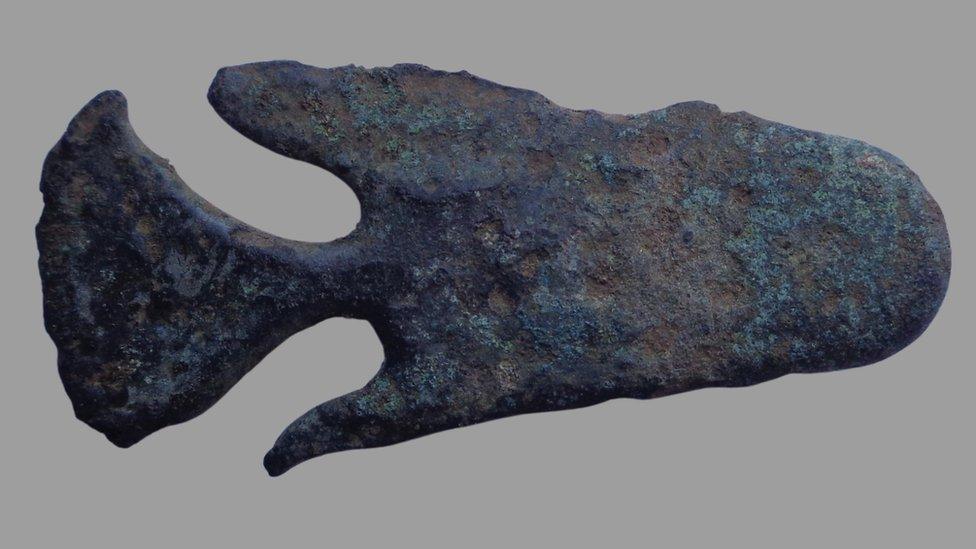
Mr Baxter is waiting for confirmation from the Treasure Trove that this is a Bronze Age arrow tip
He said: "In a general field 90% of the time there will be nothing in it.
"You could go in all the fields on the right and left along the M9 from Falkirk to Edinburgh and there would be nothing in them apart from modern Victorian stuff or Georgian stuff.
"It's hard to get stuff that's beyond 500 and 600 years old because the population was a lot lower."
Mr Baxter said a field could be full of medieval items, but detectors were not going to find them if the crops were too high.
"Then it comes down to knowledge and the best conditions," he said.
"You need to know that the crops need to be soft cut.
"Barley and wheat is softer than oats. When oats get cut the stubble is really hard.
"And obviously the carrot harvest was the best."